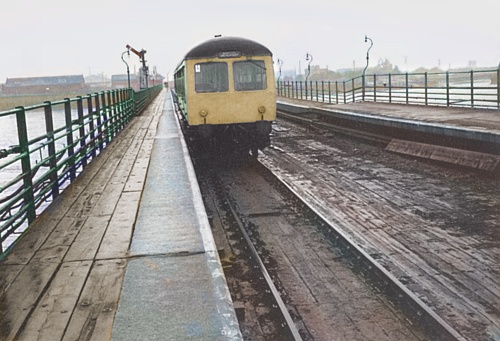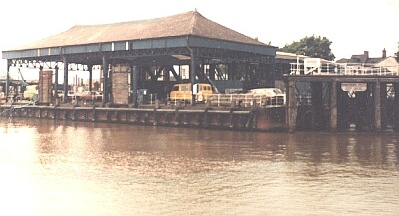
| New Holland gained its importance as a stage coach to ferry terminal (replacing Barton) for the trip to Hull and then from the 1850's as a railway to ferry exchange on the Manchester, Sheffield and Lincolnshire Railway, which through acquisitions and later government led rationalisation became part of the London and North East Railway in 1921. The LNER also owned the ferries. British rail took over with nationalisation in 1947. The rail to ferry link survived Beeching and the was only ended by the opening of the Humber Bridge west of Barton in 1981, though the railway survives connecting to bus services across the bridge at Barton. |
| This page shows the stages of the journey to and over the Humber. |
| The train once went along the pier. It no longer does, but could with some organisation. Now the pier brings in bulk materials. The Bygone Gallery shows the pier used by earlier trains. |
| This picture (which can be seen with others in the gallery) shows where the ferry used to dock. The ramp down took foot passengers and vehicles from the railway station. There are no ramps any more. Boats for delivery just come to the pier end. |

| Then the ferry set off. New Holland Pier is opposite St Andrew's Quay, but the ferry went to the Old Town's Corporation Pier further east. The journey took about 20 minutes. The fare was well in excess of the equivalent expensive toll over the Humber Bridge for cars and of course modern trucks could not use the ferry. |

| This is Corporation Pier as it was before the end of the ferry and the modernisation of the Pier area. Tickets were bought at the ticket office on the opposite side of the road of the pier landing station. |
| I took this photograph of the Humber Bridge during one of the many autumnal sunsets that make an evening trip to the river bank well worth while. In the foreground is Fairfields Pit. Click on the picture to read about the Clay Pits. |